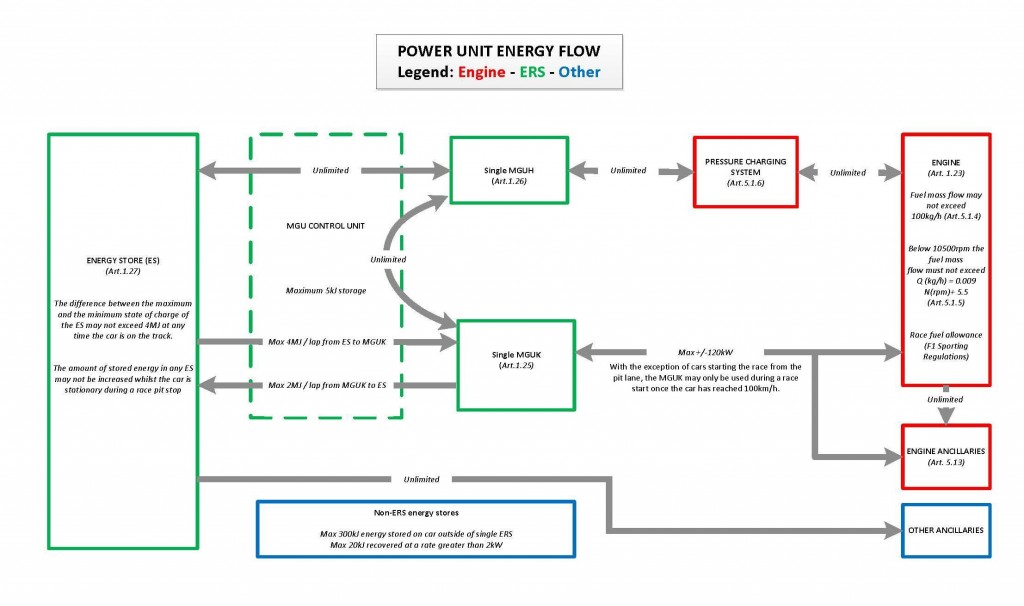godlameroso wrote: ↑07 May 2018, 19:52
SOC is triggered by the timing line, or the entry and exit of the pits.
What do you mean by “SOC is triggered”? Is SOC reset to zero and as long as the SOC doesn’t exceed 4 MJ above that during the next lap it’s legal? That would provide a method to accumulate absolute, as opposed to relative, SOC over a series of laps. That’s not what the regulation says.
All ERS energy flows through the control electronics anyways, so that's an easy place to take all your measurements.
Obviously that’s the case. For regulation enforcement only 2 measurements are made. They are both integrals over time. My observation was that they need to be synchronised otherwise any flow into or out of ES might be interpreted as coming from or going to the MGU-K. If they are not synchronised the ”extra harvest” route MGU-K > MGU-H > ES would be measured as direct K to ES, and would bring no benefit.
SOC is independent of battery capacity, SOC is referenced to ES -> MGU-K upon crossing the start finish line. The start/finish timing line is a laser, whenever the car triggers that laser it's SOC. On the driver's steering wheel there are readouts for both battery capacity, and ES-> MGU-K/lap.
Agreed. I don’t understand what you mean by SOC is referenced... do you mean the end SOC is beginning plus Integral of K?
How would battery capacity help the driver? Surely they only need to know available discharge.
At the bottom of the steering wheel you can see Vettel's battery capacity, and at :50 you can see him check the lap SOC.
I interpret the bar graph at the bottom as showing total ES to MGU-K available and the percentage used. The percentage goes to 100 at the end of the lap.
Thanks for input but I still don’t understand how the two measurements made enforce the regulations, or even how to interpret the regulation itself.
Fortune favours the prepared; she has no favourites and takes no sides.
Truth is confirmed by inspection and delay; falsehood by haste and uncertainty : Tacitus


